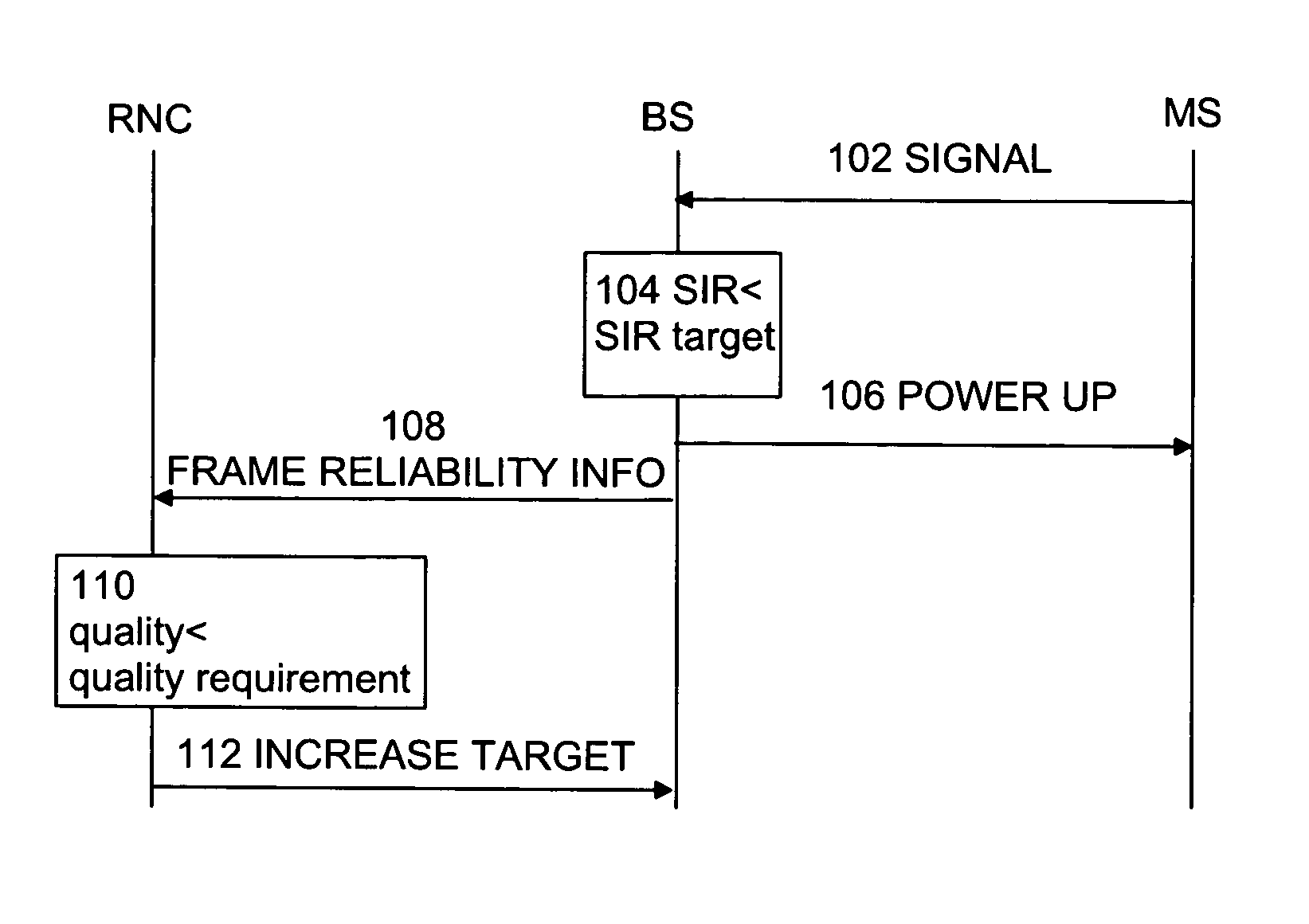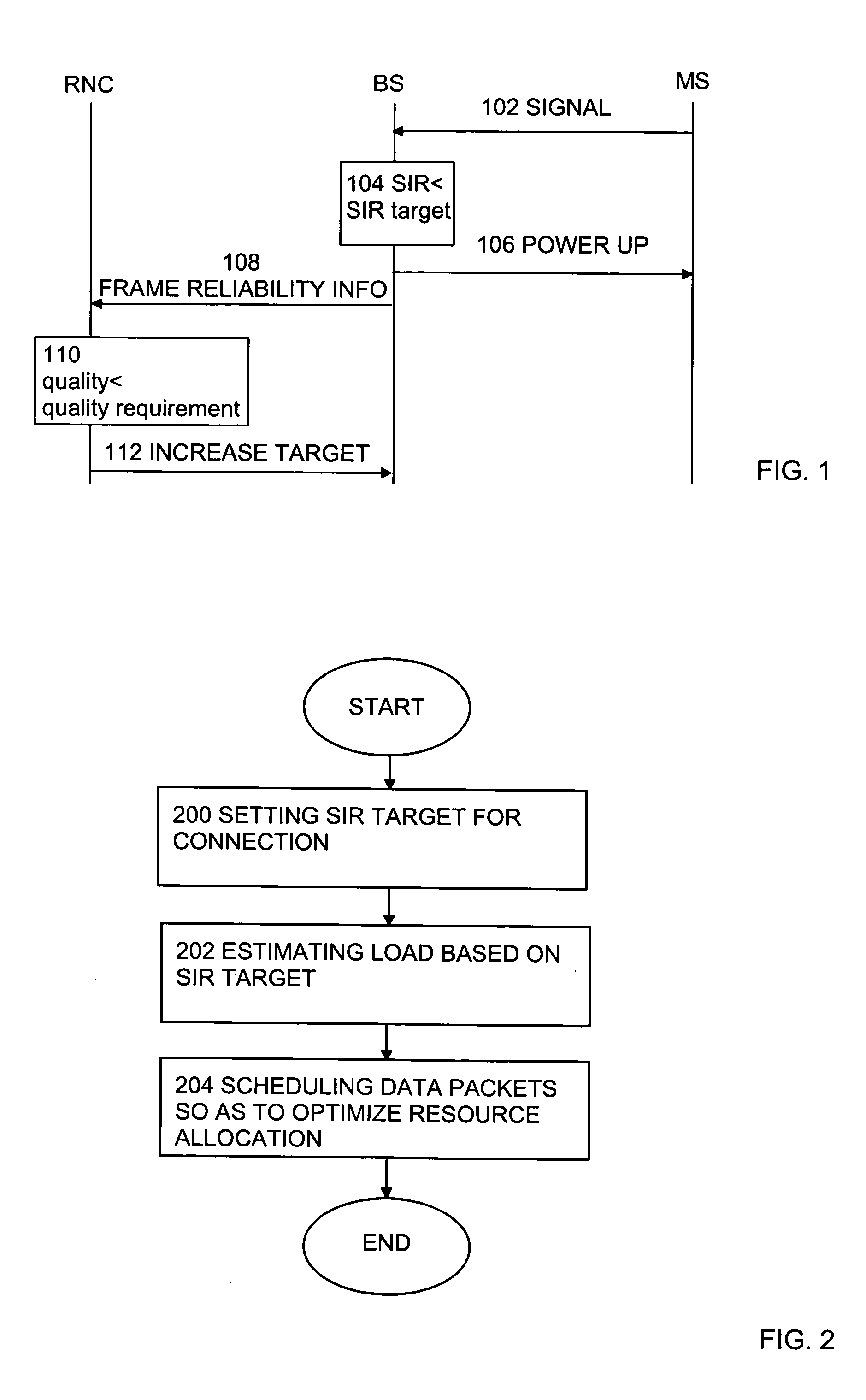Method and arrangement for uplink scheduling
a technology of uplink scheduling and scheduling methods, applied in the direction of digital transmission, data switching networks, electrical devices, etc., can solve the problems of inaccurate prior art load estimation, increased disadvantage of prior art, and increased use of measured sinrs, so as to enhance the utilization of network resources, increase the capacity of interference-limited communication systems, and increase transmission power
- Summary
- Abstract
- Description
- Claims
- Application Information
AI Technical Summary
Benefits of technology
Problems solved by technology
Method used
Image
Examples
Embodiment Construction
[0020]FIG. 1 is shows one embodiment of a method according to the invention. At first, it is assumed that there is a number of terminals within the operating area of a network. The network includes a number of base stations or Node B's, each having a certain operating area, that is, a cell. Cells partly overlapping each other thereby form a cellular network having a certain coverage area. A terminal in the operating area of the network may simultaneously have a connection to one or more base stations simultaneously. A situation wherein a terminal has a connection with two or more cells is called soft handover. Base stations participating in soft handover for a connection form an active set for the connection.
[0021] Typically, base stations are controlled by a base station controller (BSC) or a radio network controller (RNC). RNC or BSC is a network element level that is capable of estimating load in base stations. During a connection, a base station can send measurement reports, su...
PUM
 Login to View More
Login to View More Abstract
Description
Claims
Application Information
 Login to View More
Login to View More - R&D
- Intellectual Property
- Life Sciences
- Materials
- Tech Scout
- Unparalleled Data Quality
- Higher Quality Content
- 60% Fewer Hallucinations
Browse by: Latest US Patents, China's latest patents, Technical Efficacy Thesaurus, Application Domain, Technology Topic, Popular Technical Reports.
© 2025 PatSnap. All rights reserved.Legal|Privacy policy|Modern Slavery Act Transparency Statement|Sitemap|About US| Contact US: help@patsnap.com



